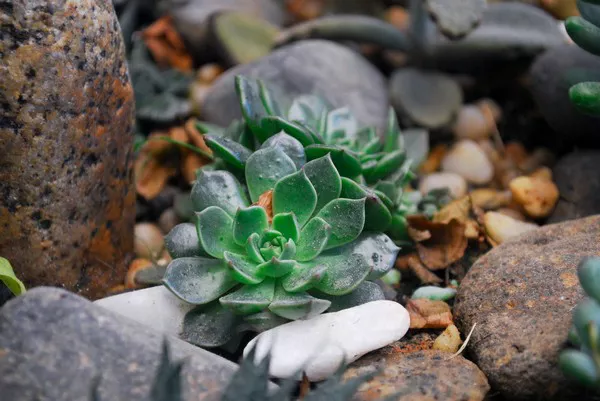Succulents have surged in popularity as houseplants due to their low maintenance and unique aesthetic appeal. These plants are renowned for their ability to store water in their leaves, stems, or roots, allowing them to thrive in arid conditions. However, despite their reputation for resilience, improper watering remains one of the most common reasons for succulent demise. To ensure the health and longevity of your small succulents, it’s crucial to understand their watering needs and establish a proper watering routine.
Understanding Succulent Watering Needs
Succulents are adapted to survive in environments with minimal water availability, such as deserts and arid regions. Their specialized anatomy allows them to store water for extended periods, enabling them to withstand drought conditions. The thick, fleshy leaves of succulents serve as reservoirs for water storage, while their shallow root systems efficiently absorb moisture from the soil.
However, despite their water-storing capabilities, succulents still require periodic watering to remain healthy. Overwatering is a common mistake among succulent enthusiasts and can lead to root rot, fungal diseases, and ultimately, the demise of the plant. Conversely, underwatering can cause dehydration and wilting, resulting in stunted growth or even death.
Factors Influencing Watering Frequency
Several factors influence how often you should water your small succulents:
1. Plant Type: Different species of succulents have varying water requirements. Some varieties, such as Haworthia and Gasteria, prefer more frequent watering, while others, like Echeveria and Sedum, thrive with less frequent irrigation.
2. Season: Succulent watering needs fluctuate throughout the year. During the growing season in spring and summer, when succulents are actively growing, they require more frequent watering. In contrast, watering frequency should be reduced during the dormant period in fall and winter to prevent waterlogging and promote healthy dormancy.
3. Climate: The climate in which you live plays a significant role in determining watering frequency. Succulents grown in hot, dry climates may require more frequent watering than those in cooler, more humid environments.
4. Pot Size and Material: The size and material of the pot can affect water retention and drainage. Succulents planted in larger pots with proper drainage holes typically require less frequent watering than those in smaller pots or containers without adequate drainage.
5. Soil Type: Well-draining soil is essential for succulent cultivation. Soil mixes specifically formulated for succulents and cacti, such as those containing perlite, sand, or pumice, facilitate proper drainage and prevent waterlogged roots.
Establishing a Watering Schedule
While there is no one-size-fits-all watering schedule for succulents, you can develop a watering routine based on the factors mentioned above. Here are some guidelines to help you determine how often to water your small succulents:
1. Check the Soil Moisture: Before watering your succulents, always check the moisture level of the soil. Insert your finger into the soil up to the first knuckle. If the soil feels dry to the touch, it’s time to water. However, if it still feels moist, hold off on watering until the soil dries out further.
2. Observe the Plant’s Appearance: Pay attention to visual cues from your succulents. Healthy succulents typically have plump, firm leaves. If you notice the leaves becoming soft, wrinkled, or translucent, it may indicate underwatering. Conversely, mushy or discolored leaves could signal overwatering or root rot.
3. Adjust for Seasonal Changes: Adapt your watering frequency based on seasonal variations. Increase watering during the warmer months when succulents are actively growing and decrease it during the cooler months when growth slows down.
4. Water Thoroughly but Infrequently: When watering your succulents, ensure thorough saturation of the soil, allowing excess water to drain out of the pot’s bottom. However, avoid leaving your succulents sitting in standing water, as this can lead to root rot. Water less frequently but more deeply to encourage healthy root development.
5. Monitor Indoor vs. Outdoor Plants: Succulents grown indoors may require less frequent watering than those grown outdoors, as indoor environments typically have lower humidity levels. Conversely, outdoor succulents may need more frequent watering, especially during periods of intense heat or drought.
Common Watering Mistakes to Avoid
To prevent potential issues and ensure the optimal health of your small succulents, avoid the following common watering mistakes:
1. Overwatering: Resist the urge to water your succulents too frequently. Allow the soil to dry out between watering sessions to prevent waterlogged roots and associated problems.
2. Using Improper Soil: Ensure your succulents are planted in a well-draining soil mix specifically designed for cacti and succulents. Heavy or moisture-retentive soils can lead to excess moisture around the roots, increasing the risk of root rot.
3. Neglecting Drainage Holes: Proper drainage is essential for succulent health. Always plant your succulents in pots or containers with drainage holes to allow excess water to escape.
4. Watering from Above: Avoid watering your succulents from above, as this can lead to trapped moisture in the rosettes, promoting fungal diseases and rot. Instead, water directly at the base of the plant to prevent water accumulation in the leaf axils.
5. Ignoring Environmental Factors: Be mindful of environmental conditions such as temperature, humidity, and sunlight exposure, as these factors can influence your succulents’ watering needs. Adjust your watering schedule accordingly to accommodate changing conditions.
Conclusion
Proper watering is essential for maintaining the health and vitality of small succulents. By understanding the factors influencing watering frequency and establishing a consistent watering routine, you can help your succulents thrive. Remember to monitor soil moisture, observe your plants for signs of dehydration or overwatering, and adjust your watering schedule based on seasonal changes and environmental conditions. With careful attention and proper care, your small succulents will reward you with their beauty and resilience for years to come.


